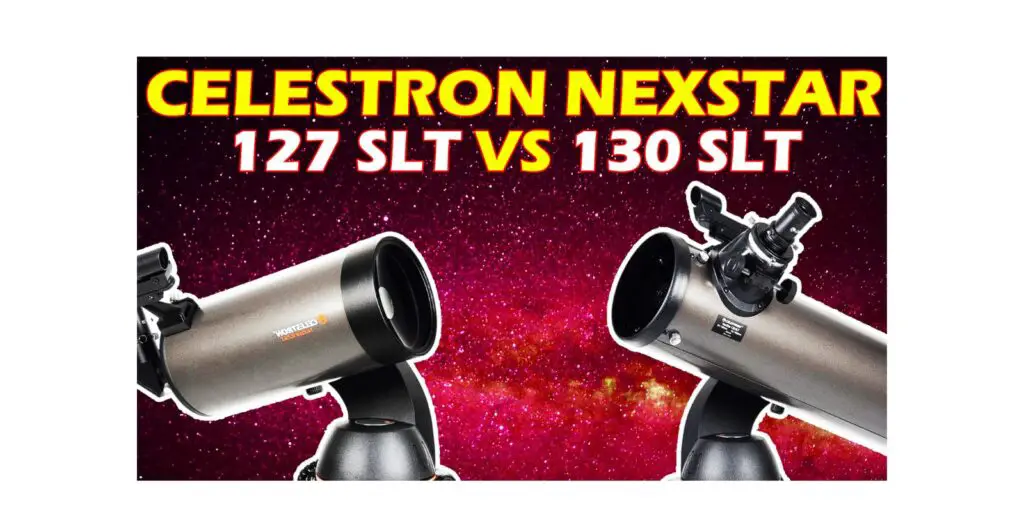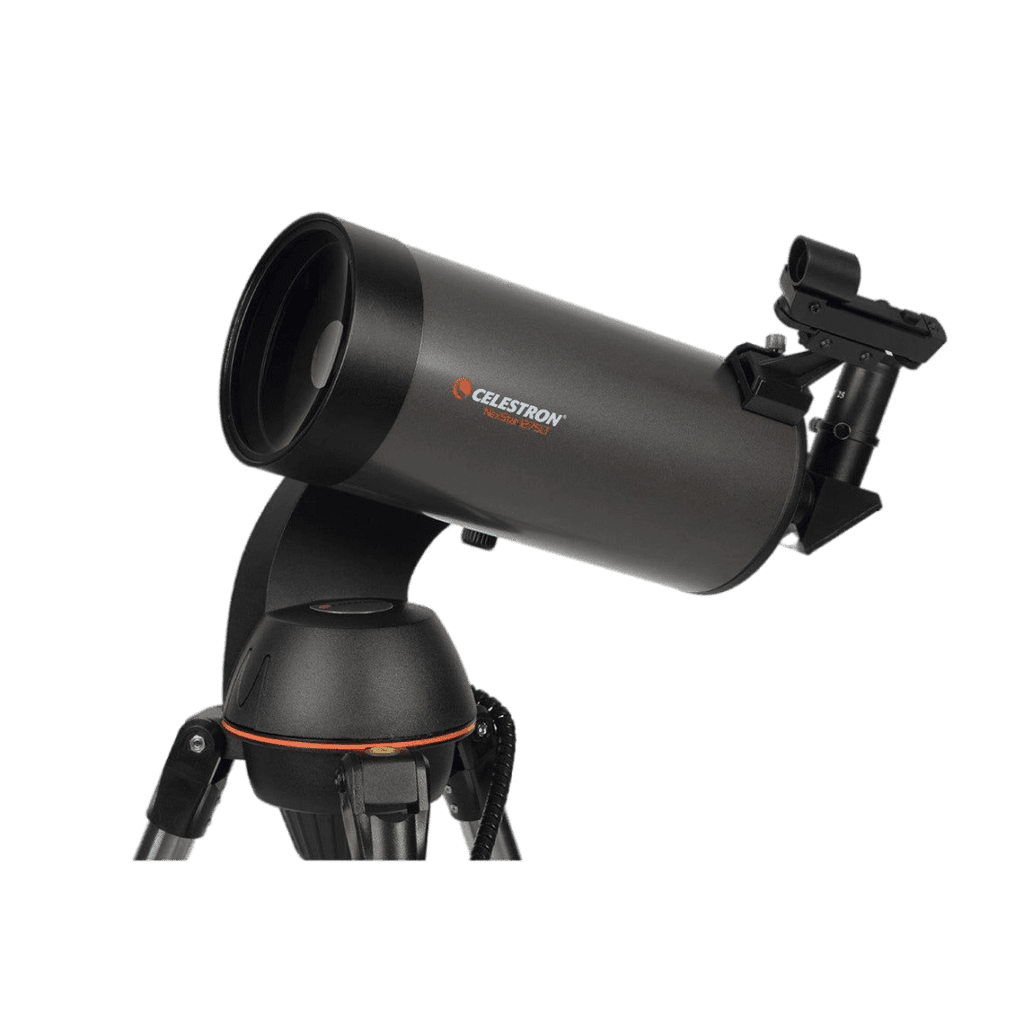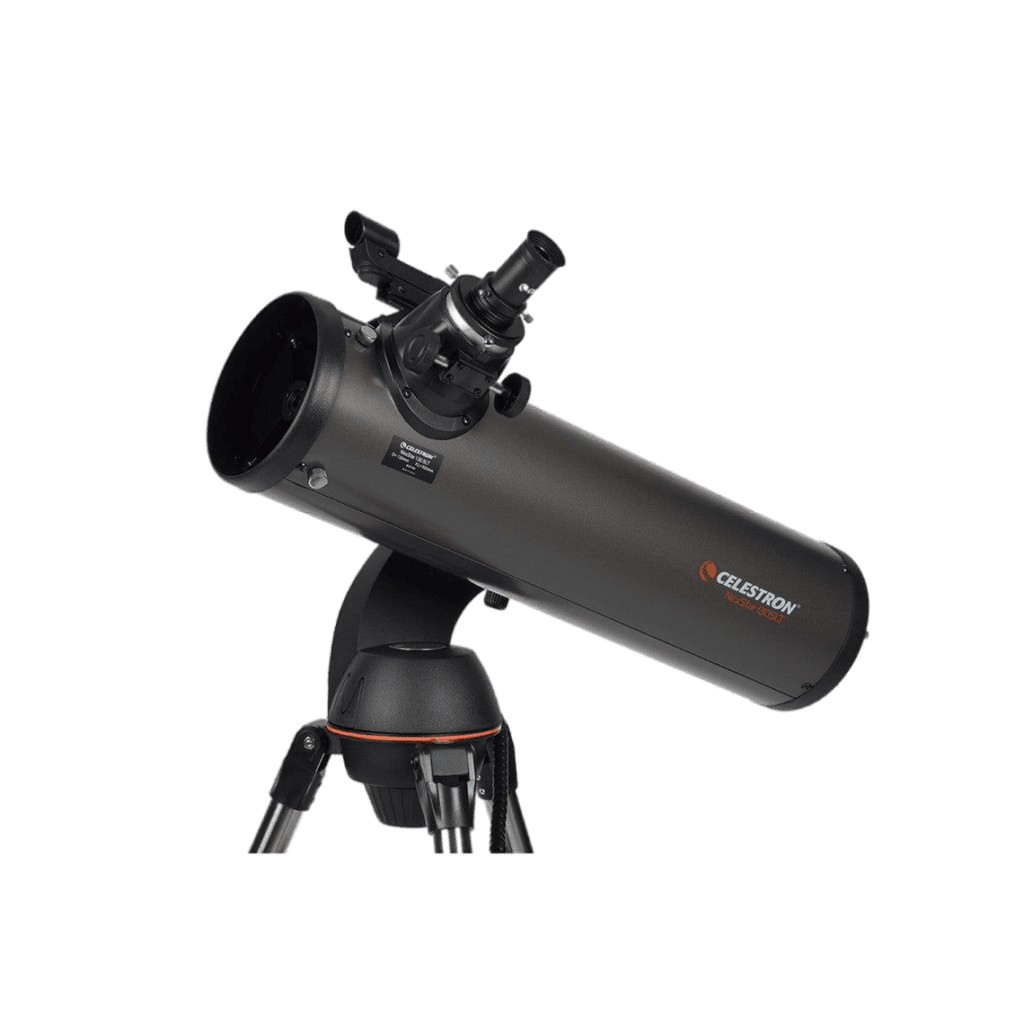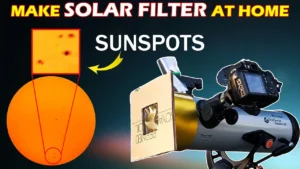
If you are a reader of TheAlienTech.com, then you already know that Celestron is the leading brand for consumer telescopes. They manufacture all kinds of telescopes. Previously, we gave a little overview of all the telescopes in the SLT series. In this article, we will cover only the two biggest telescopes from the SLT series, 127 SLT, and 130 SLT. SLT stands for “Star Location Telescope.” First, we will see the details of these telescopes, and then we’ll see how they are different from each other.
Details of the Celestron NexStar 127 SLT
This is the 2nd largest telescope from the SLT series. It has an aperture of almost 5-inches, which is about 127mm. The telescope has a focal length of 1500mm and a focal ratio of 12. The telescope comes with two eyepieces, one measuring 25mm and the other 9mm. With this telescope, you can get 60X magnification with a 25mm eyepiece and 167X magnification with a 9mm eyepiece.

The highest useful magnification of this telescope is 300X, and the lowest useful magnification is 18X. The telescope has a computerized single-fork alt-azimuth mount. The load capacity of this mount is 8 lbs or around 3.7 kg. The weight of the mount is 5 lbs or about 2.6 kg. The tripod also weighs the same as the mount, about 2.6 kg.
Details of the NexStar 130 SLT
This is the biggest telescope from the SLT series. It has an aperture of 130mm around 5.1-inches. Its focal length is 650mm, and its focal ratio is 5. This telescope also comes with two eyepieces, 25mm and 9mm. You can get 26X magnification with a 25mm eyepiece and 72X magnification with a 9mm eyepiece. The highest useful magnification of this telescope is 307X, and the lowest useful magnification is 19X.
This telescope also has a computerized single-fork alt-azimuth mount. The mount and tripod of both telescopes are the same, with similar weight-carrying capacities. They both have data on 40,000 celestial objects.

The biggest and most significant difference between these two telescopes is their optical design. The optical design of the 127 SLT is Maksutov-Cassegrain, and the optical design of the 130 SLT is a reflector-type telescope. Both these Maksutov and Schmidt-Cassegrain types fall under the catadioptric type of telescope. If you don’t know the types of telescopes, then you read “Different types of telescopes“.
What is the Maksutov Cassegrain type?
Maksutov-Cassegrains are another type of compound telescope, similar to Schmidt-Cassegrains. These Maksutov telescopes use spherical mirrors to collect light. They have a curved lens in the front to correct for any aberrations. It is also called a corrector plate. The corrector lens on a Maksutov telescope has a simple spherical curvature. It is easy to manufacture these curved lenses. The secondary mirror in the Maksutov-Cassegrain has a thin layer of aluminum at the back of the corrector lens. The Maksutov-Cassegrain telescopes do not need any alignment.
One more difference you will notice is that both the 127SLT and the 130SLT have almost similar apertures, but the difference between the focal length and focal ratio is quite big. Maksutov-Cassegrain telescopes use a corrector plate and a convex mirror; because of this, Maksutov telescopes usually have a longer focal length and a high focal ratio.
Because of the higher focal lengths, you can get higher magnification with Maksutov-Cassegrain telescopes. Read this to know more about the focal length and focal ratios of a telescope.
What can you see with these telescopes?
The NexStar 127 SLT has a long focal length and slower focal ratio. So such telescopes will give you a narrow field of view. This is good for viewing planets and nearby objects. You can use the higher magnification to view the details of the object. So, with 127 SLT, you can see the moon, Jupiter, Saturn, Venus, etc.
130 SLT is a reflector-type telescope. Its focal length is less and has a faster focal ratio. A fast focal ratio is good for deep-space observations. So 130 SLT will give you a wide field of view. You can see the lunar surface, Venus and its phases, the polar caps on Mars, Jupiter and its four moons, and Saturn with its rings visible. Some bright deep-space objects can also be seen with this telescope. Usually, a 5-inch telescope is an entry-level telescope for deep space observation.
Which one should you buy?
Usually, when buying a telescope, price is the most critical factor. But in the case of these two telescopes, there is not much difference between the prices. So it all depends on what you want to observe with your telescope.
Maksutov-Cassegrain telescopes are compact and very easy to carry along. These telescopes have very little chromatic aberration and are good for viewing planets. So, if you just want to observe the moon and planets with great detail then 127 SLT is a good telescope for you.
If you want to observe the moon and planets and get familiar with some deep space objects, then you should go with the NexStar 130 SLT. But as it is only a 5-inch aperture, do not expect too much deep-space performance.
Both of these telescopes use the same mount. The mount sometimes vibrates, which you can overcome with anti-vibration pads.
If you just want to choose between these two telescopes, then you should buy the NexStar 127 or 130 SLT, depending on what you want to observe.
But if you can stretch your budget, a better telescope than these two is the Celestron NexStar 6SE, which is superior to these two and has a big enough aperture for viewing planets and deep-space objects. This telescope is perfect for any type of astronomer and will serve you well over the long term. You can watch the details of this telescope here.
Summary of 127SLT & 130SLT
| NexStar 127SLT | NexStar 130SLT | |
| Aperture | 127mm (5″) | 130mm (5.1″) |
| Focal Length | 1500mm (80″) | 650mm (80″) |
| Focal Ratio | f/12 | f/5 |
| Highest Useful Magnification | 300x | 307x |
| Lowest Useful Magnification | 18x | 19x |
| OTA weight | – | 8.8 lbs (3.99 kg) |
| Mount Type | Single fork AZ mount | Single fork AZ mount |
| Mount Load Capacity | 8 lbs (3.7 kg) | 8 lbs (3.7 kg) |
| Total Weight | 18 lbs (8.2 kg) | 27 lbs (12.25 kg) |
| BUY HERE | BUY HERE |
If you are looking for a telescope specifically for astrophotography then you need to check this article. You can also find the best suitable telescope for you with our telescope suggestion tool.





